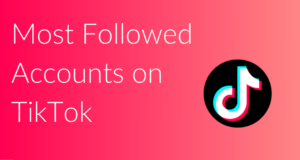The world – especially the online world – has gone social. That’s why you’re here in the first place. You know that social media is critical for spreading your brand’s message, reaching out to the right market and interacting with potential clients and customers.
Think about it: are you taking all the steps you can? Have you harnessed the power of social media in your own website or blog? Are you taking steps to ensure your content reaches the maximum number of readers and generates interest on a wide scale? If social buttons aren’t part of your strategy, the answer is no. Check out these five ways to use social buttons on your website or blog to enhance your outreach efforts and capabilities.
1. Use Follow and Share Buttons Appropriately
You’ve probably seen sites with social media buttons; maybe you’ve added a few to your own site. But, do you know the difference between follow and share buttons? Are you incorporating both into your digital marketing scheme?
Follow buttons are just that – an easy way for your website visitors to follow you on social media. Best displayed on a homepage or standing navigation bar, these buttons increase your social followings by decreasing the number of steps necessary for a visitor to “subscribe” via specific social networks.
Share buttons are meant to widely distribute content. These buttons allow readers of posts to share them on their personal feeds and networks, and are therefore best displayed at the bottom of each individual post.
2. Don’t Limit Your Networks
Maybe you only use a single social network; that’s fine. However, chances are your visitors use multiple networks. While a follow button is only appropriate for networks on which your brand is active, share buttons are limitless. You want your readers to be able to share wherever they are most active.
For example, if Russ Brown, a motorcycle attorney, only has a Twitter account and is creating content on his website, his users shouldn’t be limited to sharing on Twitter. Instead, because the link will go back to the website, not to a social media account, his readers should be able to easily share – with a single click – on Facebook, Google+ and any other networks they frequent; the more exposure, the better.
3. Draw Attention to Your Buttons
Just like anything else on your site, sometimes things blend in and creating action on your visitors’ parts requires being blatantly obvious. Every now and then, remind your visitors – through blog posts, social media statuses or email newsletters – to follow you online. Ask them to share the content you’ve created. By being obvious and by placing the buttons in easy-to-find locations, you’re increasing the likelihood that they’ll be utilized.
4. Offer an Incentive
What if there was a direct reward for sharing your site or a specific status? There can be and social buttons can be a part of the process.
Some companies, like MyOatmeal.com, offer discounts at checkout for customers who use the social sharing buttons provided during the process to share status updates regarding their purchases. For each network the customer “shares” on, they receive a 5% discount, up to 15% total. It’s a simple way to spread your message while getting creative with social buttons.
5. Be Classy
Remember, too much of anything is never a good thing – web design takes some class. Too many buttons can crowd your site, lead to frustration and even work against your actual objectives.
To figure out which buttons to use and where to use them, check your analytics. Look at your site data to determine which networks are top referrals. Furthermore, check out your target market and learn where they’re most likely to spend their time. Focus on these networks when creating social buttons to avoid working against your goals.
Social sharing buttons can do a lot to enhance the power of your website. Consider the ideas and tips above and consider adjusting your strategy accordingly.
About The Author
 Scott Huntington is a writer and blogger. Check out his new blog, offthethrottle.com.
Scott Huntington is a writer and blogger. Check out his new blog, offthethrottle.com.
 Social Media Data Insights & Resources for Social Media
Social Media Data Insights & Resources for Social Media



